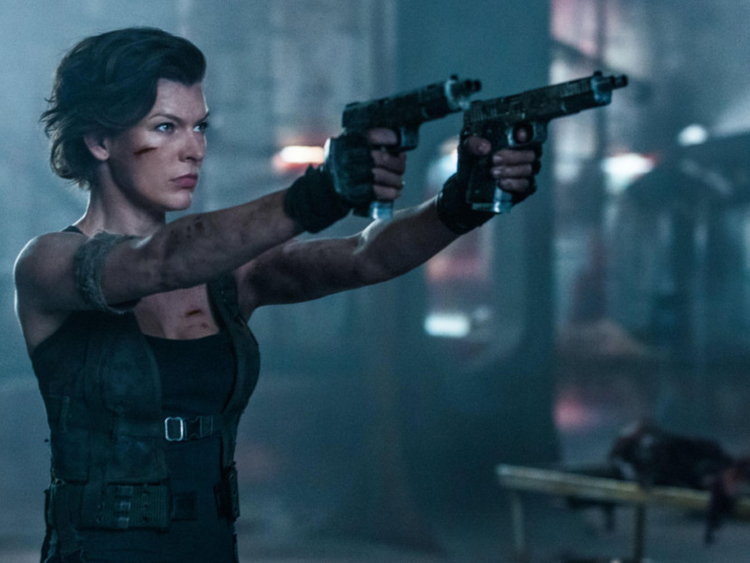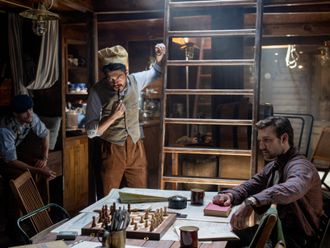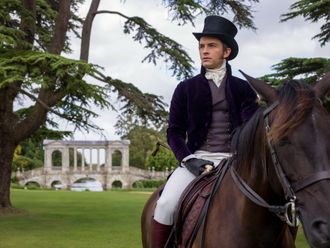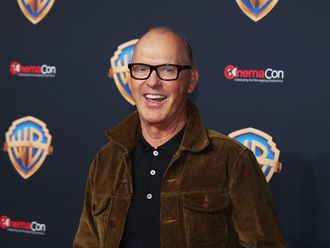
Milla Jovovich was at the forefront of the modern era of women commanding the screen as action stars. This year marks the 20th anniversary of The Fifth Element, which saw Jovovich leap off the screen as a formidable heroine — a supreme being even — who captivated audiences under the impression they were just coming to see another Bruce Willis vehicle. Her character, Leeloo, is still cosplayed around the world.
Then there was Alice. In the 15-year franchise Resident Evil, Jovovich played another kick-butt woman who was part of an experiment to create a clone resistant to a zombie virus. The 2002 video game adaptation spawned six sequels. With the recent Resident Evil: The Final Chapter, the film series crossed $1.2 billion (Dh4.4 billion) worldwide.
We talked to Jovovich about her iconic roles, and — with Wonder Woman dominating the summer and films like Atomic Blonde on the horizon — how or if the action landscape is shifting.
The conversation right now is about women leading franchises. How do you feel that conversation has changed in 20 years?
So much has changed. In Fifth Element, at the time, everyone expected Bruce Willis to be the star of the movie. Because that’s just how things were back then. Nobody thought that there would be this little orange-haired girl doing all of the crazy stuff. Back then, it definitely wasn’t the done thing. And to be honest, it still isn’t. We can talk about all that has changed — Resident Evil is an exception to the rule. Maybe there’s a few, like Hunger Games, but especially here in America, it’s hard to get movies made with strong female-driven roles when it comes to the action world. I feel like it’s always been a hard industry for women to break into, and definitely we’ve made great strides with women being taken seriously when it comes to this genre and these kinds of films, but at the same time there’s definitely a long way to go to have women be accepted 100 per cent as action heroes.
Why is that?
It has to do with a couple of things. I think a lot of actors in general don’t really like action movies. I think if you don’t respect what you’re doing, then how are other people going to like it? Something that I’ve heard a lot from actors is that it’s not real acting. It’s silly stuff. Doing things in front of a green screen. They don’t take it seriously.
For me, acting in front of a green screen always presented really immense challenges. It’s so much easier to act on location than it is in a studio that’s all silent where you can hear a pin drop. On location, when it’s freezing or it’s really hot, at least you can react to that. But when you have to pretend about everything, it gets challenging. You have to pretend to be hot; you have to pretend to be slogging through a jungle; you have to pretend that you’re on top of a building 100 stories up. It’s hard. For me it was always a pleasure to be part of something that was bigger than me and to be able to play characters that were so much bigger than myself.
Resident Evil may not have ushered in a bigger trend of video game movies, but it did make an impact.
I do feel like Resident Evil was very [instrumental] in getting zombies back on the screen. They’re winning all over the place now. When we did Resident Evil the first time, we had to get extras to play zombies and stuff. We had to send them to school and get movement coaches and put them through a zombie boot camp. Now there’s professional zombies _ I mean they’ve made careers out of being zombies. They know how to move like a zombie. There’s a whole zombie world out there now where people know what they’re doing — make-up artists, prosthetic artists.
There’s even a colour palette now. Like, grime. I don’t remember what it’s called, but it’s something that has to do with the undead. It has colours like grass stains and old blood.
You once said that the longer you play a character, the more you put yourself into them. What did you put into Alice and Leeloo?
Putting too much of yourself into a character is a challenge, especially for me and these... I mean, someone like Robert De Niro, for instance, or Jack Nicholson, they can play themselves all day long in every movie. They could be playing a doctor. They could be playing a gangster. They could be playing a dad or a grandfather — but they’re always themselves. And we love that. But with a character like Alice, I couldn’t be myself. I’m me right now talking to you, but I don’t sound like Alice. Alice [and here she slows her voice and lowers it a register or two] talks like this, and it’s different. [Back to her normal voice] And Leeloo, she’s very much an anomaly because we’d never seen anything like her before or after — to this point. She’s a very special character in the history of cinema. She is very different, and for that, I literally had to leave myself at the door because I couldn’t bring any habits — to the point of saying, “Don’t breath before you laugh.” Just one of those things. It’s the weirdest thing in the world, but Luc [Besson, director of Fifth Element] was like, “Don’t breathe when you laugh.”
[Jovovich makes a high-pitched, wheezing sound] I mean, try it when we get off the phone! You sound like an idiot, but you have to get over it. You have to get over being an idiot or you can’t be an actor ‘cause that’s part of your job. For me, I literally didn’t have anything to draw from so we had to make references — new references because we couldn’t draw from old references. So I ended up going to the zoo and studying animals — and figuring out who Leeloo was based on her animal spirit.
Her animal spirit?
My acting coach and I would go to the zoo and stand in front of cages and start imitating the animals — which was funny for the kids who were watching. Then [I would] try the character with these new physical changes to myself. Some didn’t feel right. She wasn’t a monkey. She wasn’t a snake. She wasn’t a jaguar; she didn’t have that kind of sleek, sexy way of walking. What I found is that Leeloo ended up being a combination between a baby lion and a bird. When you think about it, you can see it. She’s got this childish innocence. She’s clumsy, a bit heavy-handed like a lion. She’ll make a mess. But then she’s alert, like a bird, head constantly moving. So that ended up being my real references for who she was.
Where do you see yourself and your legacy in the lineage of action heroines?
I don’t want to worry too much about my legacy, because I think you could drive yourself crazy thinking that way. I’ve always been quite demanding of myself and probably too hard on myself in certain ways, so if I start thinking about my legacy, I would beat myself up too much. So I think about doing the things that are interesting to me and mostly just focusing on my family. If something is able to get my focus away from my family, then it’s probably worth doing. The legacy is going to happen regardless.
Are you involved in the Resident Evil reboot, and how do you feel about it?
I haven’t heard anything about it. Look, it’s a great universe. It should get a reboot. My advice to them is to find people who are as passionate about it as we were. I think that’s what you need to have successful franchises. You need people who really love the property and love what they’re doing to put their excitement, enthusiasm and energy into it. If you start becoming too much like a machine, I think the fans feel it. They don’t want something that’s cookie cutter, they want something original and something that they can feel is real. Resident Evil is always real. You have your fans and you have people that hate it, but the fact is it’s held its place because of the passion that we put into it and the excitement level that we have making it. If they find people that really have that, they’re in good shape.














